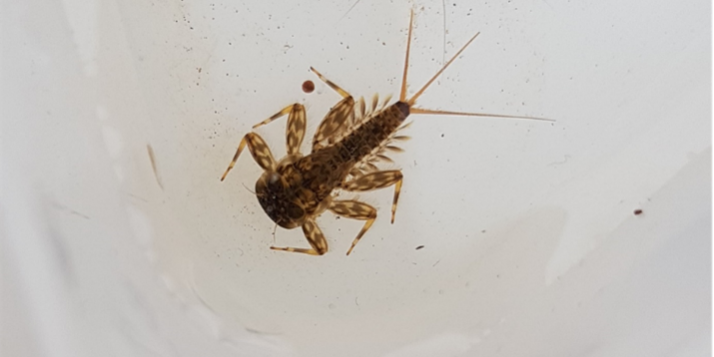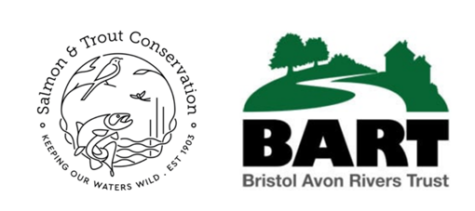
To better understand the water quality pressures influencing the River Chew, Bristol Avon Rivers Trust (BART) enrolled onto the Salmon & Trout Conservation (S&TC) SmartRivers project in 2019. After two years of monitoring, a strong evidence base has been created and water quality ‘pinch-points’ have been identified, providing information to take targeted action on the Chew. This is described in a new report, available here:
In healthy rivers and streams nutrients and sediment occur naturally in small amounts and are crucial for the growth of aquatic plants and animals. However, unnatural loads of nutrients and sediment are entering our watercourses. These excess inputs come from fertilisers, manure, sewage, waste, urban surface run-off and the use of household products such as washing detergents. The River Chew, like most rivers in the UK, is being subjected to these inputs, which degrade water quality and limit its ability to sustainably support healthy wildlife, including wild fish populations.
To date, statutory monitoring programmes undertaken by the Environment Agency have been used to identify reasons for failure to meet water quality standards. But ongoing government cuts in funding have severely reduced these monitoring programmes and resulted in insufficient evidence to prioritise and target local improvement work.
What evidence has been collected and how?
SmartRivers is an evidence collection project, whereby near-professional standard samples of aquatic invertebrates are collected and analysed to species level. Particular invertebrates have tolerance limits to specific environmental conditions, so by looking at what species are present at a site, a water quality ‘scorecard’ can be generated with impact grading bands. This scorecard describes the impact of organic pollution, nutrient enrichment, sediment, chemicals and flow stress at chosen sites.
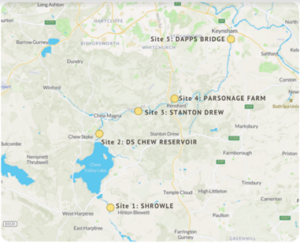
Map 1. The five SmartRivers sample sites along the River Chew.
Sampling
BART began sampling at 5 sites on the River Chew in autumn 2019. A variety of species were found at the five sites, including cased caddisflies, caseless caddisflies, stoneflies, mayflies, beetles, fly larvae, freshwater shrimps and worms. The diversity varied between sites and sometimes seasons, from excellent to moderate. The results from the analysis revealed that excess sediment was the pressure of most consistent concern at all but one of the sites.
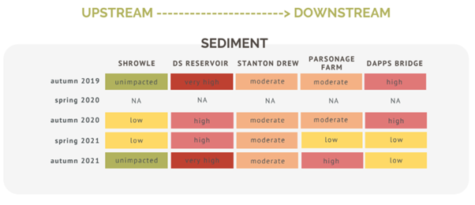
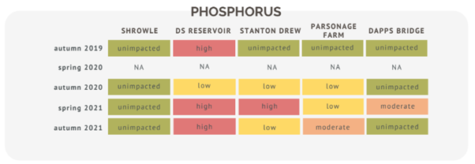
Table 1. Summary for two of the five parameters assessed at each sample sites.
What will be done with the evidence?
Tools, such as SmartRivers, provides valuable information to assist with catchment management decisions, as well as establishing an insurance policy for rivers in the form of a benchmark of their health.
Simon Hunter, Chief Executive Officer of Bristol Avon Rivers Trust (BART), said “To fully address the current ecological emergency, we need to create joined up healthy aquatic and terrestrial wildlife corridors, where freshwater ecosystems must be a conservation priority with co-equal status with “land and ocean”. There is a lot of work to be done, and if the current situation was to be left without investment, our rivers will continue degrade. Environment Agency monitoring has been reduced, resulting in less data collected throughout the Bristol Avon; its therefore evermore important that we find new ways to continue monitoring our rivers. SmartRivers is one of those ways, and it will pick up issues, so that we can target resource in better protecting and improve our river environments.”
BART and S&TC will be using the report to facilitate discussions with local stakeholders and working in partnership to develop a targeted action plan to reduce impacts at the worst sites.
Lauren Harley, S&TC’s SmartRivers Project Manager, said “As you can see from the results, the challenges are vast and like many other rivers, the Chew is currently failing to reach good ecological health. Diffuse pollution from fine sediments and excess phosphates is death by a million cuts down a river system. We look forward to developing our work with BART to deliver action on the issues our monitoring has highlighted. We, of course, cannot do this by ourselves, and need the regulators to enforce of existing regulations such as Farming Rules for Water”.
Both organisations recommend continuing to monitor the five Chew sites twice annually to develop understanding of the pressures impacting each site even further. BART’s aspiration is to find support that will enable the roll out of this programme across the entire Bristol Avon, working with volunteers to establish a citizen science hub to collect data that is critical in determining the health of our local rivers.
BART would like to extend its thanks to Bristol Water and D’Oyley Carte Charitable Trust for funding the project to date. Please keep an eye on BART’s website for further updates.

